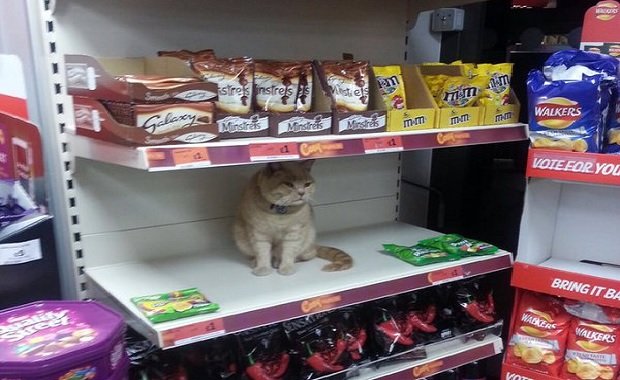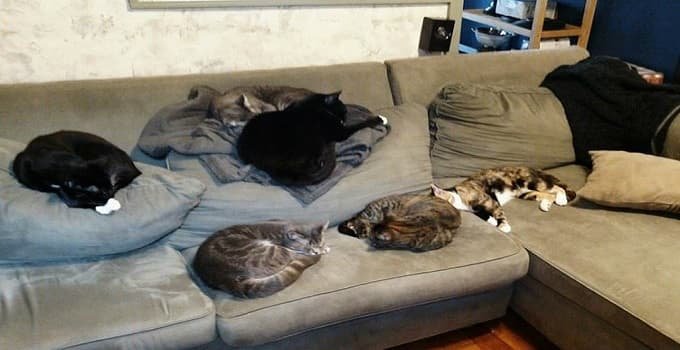After the first snow fall of winter blanketed their besieged town this week, the desperate residents of Madaya found that there were no more leaves or grass for them to eat. They began eating their pet cats and dogs instead, and burning their furniture for warmth.
The inhabitants of the small mountain town about 40km northwest of Damascus described just yesterday how an already dire humanitarian crisis has moved to the brink of catastrophe after temperatures dropped and half a metre of snow fell.
“We were living on tree leaves, on plants, but now we are struggling in a snowstorm and there are no more plants or leaves,” Majed Ali, 28, said. He had lost about one third of his entire body weight and had had to burn furniture, and even doors, in a vain attempt to keep warm.
“People are slaughtering horses and cats to eat them,” Um Ayman 57, a grandmother, said. “We are dying.”
“I saw people digging and searching in the garbage for something to eat,” said Loay, 28, a student from the nearby town of Zabadani, who fled to Madaya to avoid the fierce fighting in the region.
The food supplies which remain sell at crippling prices, he added. “Yesterday I bought 100g of jam and 100g of cheese with 30,000 Syrian pounds ($200). I ate them with my mother, and we didn’t feel satisfied.”
The average monthly salary there is only about $290.
Twenty-three patients in all in a health centre in the town supported by Doctors Without Borders have died of starvation since December 1. Six were infants.
The Syrian Observatory for Human Rights, based in Britain, says that 15 people, some of them children, have been murdered while trying to flee the town; either shot dead or killed by landmines planted by regime forces and Hezbollah fighters.
The Madaya enclave is the very last rebel-held position on the mountainous Lebanese border region of Qalamoun. Government forces backed by Hezbollah militias have methodically dismantled what was once a key rebel supply route to the Damascus area. The campaign, which began in 2012, has used starvation and barrel bombing as weapons to break the resistance of towns such including Qusayr, Yabroud and Zabadani. The Syrian regime has been accused of systematically using starvation itself as a weapon of war — but it has not been the only culprit.
The UN issued a plea for access to more than 400,000 Syrians in 15 of the besieged areas on Thursday, including some regime-held enclaves which are surrounded by rebel forces or Islamic State. Only one in 10 requests last year for access with relief supplies to besieged areas was granted at all.
In the past two months the UN has backed a number of ceasefires, notably in Homs city and Yarmouk, near Damascus, that have allowed rebel or ISIS fighters safe passage in trade for government forces re-establishing their control.
The siege of Madaya is linked to the fate of two Shia villages which are located in northern Syria — Foua and Kfraya — where hundreds of regime supporters trapped by rebel bombardment amid dire humanitarian conditions were given free passage out lust asjt week.
The UN said yesterday that it had been given an undertaking by the Assad regime to allow aid to reach Madaya in trade for access to the Shia towns.
“The UN welcomes today’s (Friday’s) approval from the government of Syria to access Madaya, Foua and Kfraya and is preparing to deliver humanitarian assistance in the coming days,” it said.
Maaz al-Qalamuni, one of the Madaya residents there, said: “When the news broke out some people fired into the air to celebrate, but most are still waiting to see the food to believe it, because they have been disappointed in the past.”
Only one aid convoy has been allowed to reach the town since July of last year.
“Madaya was last reached on October 17 with 3900 food rations — enough to feed 19,000 people for one month,” said Bettina Luescher, a spokeswoman for the UN World Food Program. “Since then, no more food assistance or humanitarian supplies made it to these areas, as was planned.”
Syrian regime sources have claimed that reports of the numbers trapped in Madaya are slightly exaggerated, and that its inhabitants are free to leave whenever they choose.
Save The Children said a charity inside Madaya had reported the deaths of three children, all of them under the age of one, and a further three unborn babies during the month of December. “They died in the womb because their mothers couldn’t sustain the pregnancy,” said a spokeswoman.
Residents of Madaya said that the siege was beginning to break the morale of some of the town’s key defenders. “Many rebel fighters surrendered and handed over their weapons to save their families,” Loay said.
“The fighters were then sent for assessment by government security forces,” he added, “before being retrained for service with the pro-Assad National Defence Force, a government militia.”
“I think the solution is individual: everyone has to manage his own way of surviving by himself. No one is able to offer help. If this continues, no one will be able to stay alive. I sometimes can’t sleep from the pain of hunger and the sound of babies crying.”










